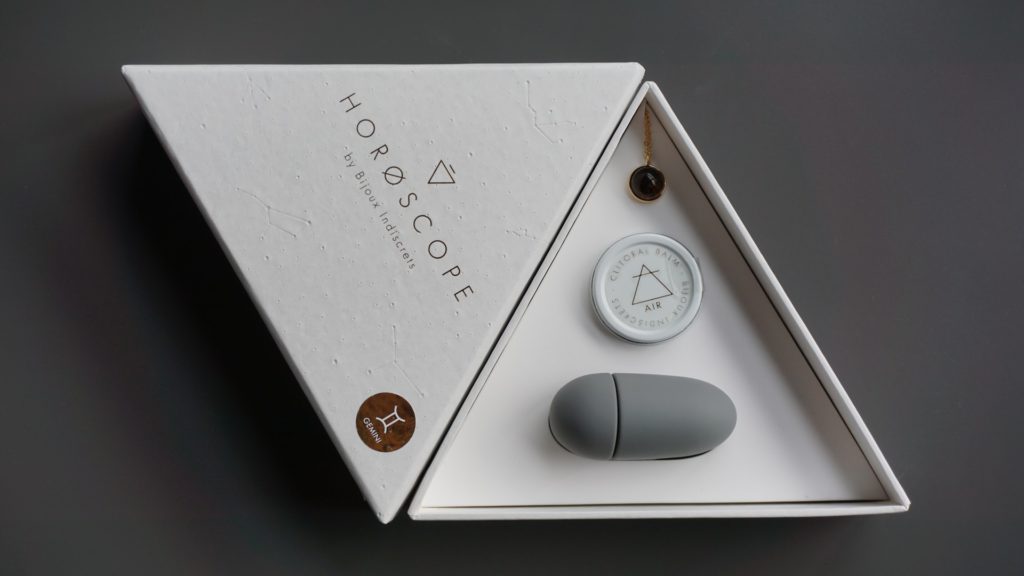This is why you need to eliminate fast fashion brands from your child’s wardrobe today.
Like most parents, you may be completely overwhelmed by the speed at which your children go through clothes. Whether they are outgrowing items at a breakneck pace due to non-stop growth spurts or ripping through buttons and seams while roughhousing on the playground, the term “sustainable” is probably the last description that you would use to describe children’s clothing.
Whether you’re an avid environmentalist or someone who follows the advice of sustainable fashion influencers on social media, you may have already had success with finding fast fashion alternatives for your own wardrobe. But have you stopped to consider which fast fashion brands to avoid when it comes to dressing your child? Could there be such a thing as sustainable kids fashion? How does sustainability fit into the picture when a piece of children’s clothing is understood to be a temporary item that will most likely be replaced by something bigger or newer before the season is over?
Can we meet our children’s clothing needs sustainably?
Modern parents are conscious consumers who are doing their own research and going to greater lengths than any generation before them to ensure that their kids benefit from all that nature has to offer. Whether that means eating organic foods, choosing only naturally derived and organic skin products for their families or avoiding unnecessary exposure to chemicals and additives, often what is good for our health and is also good for the health of our planet. The same applies to the fabrics that make up our clothing. In most cases, choosing to be responsible consumers also means choosing more natural options that are better for us and our loved ones. But how does this apply to the clothes our children wear? Caught between the ethical and environmental implications of fast fashion and their children’s seemingly never-ending demand for bigger clothing, many parents wonder how to meet their children’s needs today while ensuring the preservation of their environment tomorrow.
This is how fast fashion creates never-ending demand.
To understand this problem, we need to start by understanding the vicious cycle created by wholesale children’s clothing distributors and parents who clothe their children in fast fashion items. The cycle starts when young children grow so fast that most parents are hesitant to invest in expensive clothing for them, since they feel it would be a waste to spend money on something that will fit their child for a season or less.
- Children’s brands respond to this challenge by making low-quality children’s clothing that is quick and cheap to produce.
- These low-quality items are purchased by parents, who are content with the reduced prices that they are paying.
- However, the cheaper the garment, the lower the quality. These cheap items of clothing are often made from subpar fabrics and poorly constructed, meaning that they are much more likely to get damaged as kids play.
- This perpetuates the idea in parents’ minds and in consumer culture as a whole that children’s clothing is “temporary” and not worth investing in.
- Children contribute to this problem with their fleeting interests — this week’s favorite shirt with a print of a beloved character on it may be shunned next week as they move on to new interests.
- In a matter of weeks after purchasing clothing for their children, parents are faced with the same problem they had to start with: their children’s wardrobes are filled with clothes that are threadbare, too small or out of favor.
- Driven by high need and low budgets, parents feel they have no choice but to continue buying cheap garments just to keep their children clothed.
- This ever-present need for cheap clothing fuels the fast fashion industry to keep churning out low quality items, perpetuating the cycle.
Buy, wear, toss — Could there be a better alternative to fast fashion?
Parents who are dedicated to being responsible consumers find themselves in a tough spot. They want to make better choices for their children and for the planet by choosing organic fabrics, sustainable labels and locally made items, but most find the comparatively higher prices associated with ethically-produced, quality children’s clothing daunting. They cannot reconcile paying what seems to be much more per item, especially when they think of how quickly their children go through clothes. Some may try to ease their guilt about the piles of unworn clothing in their children’s closets by donating old items. Although well-intentioned, recycling may only save a fraction of fast fashion items from ending up in landfills, and unfortunately it does not address the issue at hand. As clothes are donated and closets are emptied, parents have no choice but to spend more money on more clothes, often resorting back to the same low quality at cheap prices.
Why is sustainable fashion important as we become conscious consumers?
Not only do these fast fashion trends wreak havoc on parent’s pockets, but also on the environment that they leave behind for their children.
- The fashion industry is responsible for 10% of annual global carbon emissions, more than all international flights and maritime shipping combined. At this pace, the fashion industry’s greenhouse gas emissions will surge more than 50% by 2030. (1)
- It is estimated that the modern consumer purchases 400% more clothing than they did just two decades ago. Despite the massive surge in demand, unethical cost-cutting processes have led to a decrease in the price of clothes over the same period. These cost-cutting measures ensure that fewer than 2% of garment workers worldwide earn a living wage.
- For every 1kg of clothing that is produced, 1kg of chemicals, in the form of dyes, fabric treatments and starches, will be used. The remnants of these chemicals either disperse into the air we breathe or seep into our rivers and oceans, poisoning natural ecosystems in the process. (2)
- More than $500 billion worth of value is lost every year when clothing is thrown away instead of donated or recycled. That amounts to three out of every five fast fashion items ending up in a landfill. (3)
- The average person will wear a garment approximately seven times before throwing it away. (4)
- Despite the dramatic rise in clothes production, the amount of time clothes are worn before disposal has fallen by almost 40%. (5) In the US, clothes are only worn for 25% of the global average. (6)
So, what can the average consumer do?
What do parents do when faced with the seemingly insurmountable challenge of fast fashion and its terrible environmental consequences? To start with, we need to make a radical shift in the way we think about children’s clothing. We need to replace the image of kids’ clothing as an impulse purchase or a disposable solution and start to consider their garments as reusable items, intended to be worn over the course of multiple seasons by multiple wearers — in other words, we need to prioritize longevity over trend. Once we have achieved this mindset-shift, we’ll find it easier to implement the following changes in our shopping and dressing habits:
Buy once, buy well
A benefit that is often overlooked when we speak about sustainable fashion brands and the clothing they produce is that while consumers may pay more per garment, these garments are designed to last. Consumers often save money in the long run by choosing to own high-quality items that won’t need to be replaced as frequently as cheaper items. Follow sustainable fashion blogs to learn more about the best sustainable brands in the business and commit to supporting them. Higher quality garments and accessories last longer, can be repaired, and command greater resale value.
Repair and reuse where possible
Instead of immediately throwing away an unwanted garment, consider all possible alternatives first. Could an outdated coat be modernized with new buttons, or perhaps tailored for a more contemporary fit? Can a torn seam or loose hem be repaired? Can threadbare socks or t-shirts be repurposed as cleaning rags? In the event that you can’t find a use for a garment, consider donating it — perhaps someone else knows just what to use it for.
Avoid synthetic fabrics and non-organic cotton
Of all the textile production methods in use, those used to produce synthetic fabrics are by far the most damaging to our environment. Polyester in particular is not biodegradable and actively sheds microplastics into our environment, which is a serious problem. While conventional natural fibers like cotton and linen are often considered to be a better alternative than synthetics, they are rife with their own ethical issues and environmental burdens. Read more about organic vs. conventional cotton here.
Get choosy about construction
The key to selecting a garment that will last is learning to distinguish good garment construction from bad. A badly constructed garment is indicative of the kind of low-wage high-speed construction that has become synonymous with fast fashion. When choosing a garment, look for tell-tale signs like mismatching patterns at the seams, loose threads and unevenly stitched hems — these will tell you which garments to avoid if you want your clothes to last for more than a few wears.
Wash and wear with care
Looking after your clothes is the best way to ensure that they will last as long as possible. In addition to being more aware of wearing habits that may damage your clothes — pushing up your sleeves, for example, or taking off shoes without unlacing them — you can also make a point of washing your clothes according to the instructions provided by the manufacturer, paying particular attention to water temperature and drying instructions. Air-dry your clothes as often as possible, as tumble-drying has been proven to shorten the lifespan of most fabrics.
Resell
Resale is a key component of the shift to a circular economy, helping break the fast fashion death spiral. It will reduce new clothes production and extend the lifespan of existing garments. This is a much more effective use of the material, labor, and energy that goes into making the products in the first place.For clothes that your kids have outgrown but are still in good condition, resell them through platforms like Kidizen, ThreadUp, or Firebird’s Pass it On program. Doing so will not only be the environmentally responsible thing to do, but will also earn you money toward purchasing new high quality clothes for your always growing kids. Not to mention freeing up valuable storage space!
How Firebird Kids is tackling issues of sustainability in children’s fashion
As a sustainable children’s clothing brand, Firebird Kids is dedicated to producing better quality garments that are designed to last. Instead of incorporating popular characters into our designs, we prefer to create timeless, gender-neutral garments that not only withstand shifting trends but can even be passed down to siblings once they are outgrown. Well-loved garments that have reached the end of their lifespan can be returned to Firebird in good conscience, as our team will ensure that they are recycled in a responsible and planet-friendly way.
Our most innovative solution — the Pass It On program
One of the most surprising benefits of Firebird’s responsible garment recycling program has been the amount of clothes that are returned in perfectly wearable condition. Since Firebird Kids items are constructed with much more care than common fast fashion items, they are likely to last past the point that they are outgrown. This inspired us to implement our innovative Pass It On program, which allows parents to return well cared for, barely-worn or outgrown garments for resale.
Parents who return items that are in good enough condition for us to resell, are rewarded with credits that can be used to purchase more Firebird items. This way, parents are able to keep up with growth spurts while continuing to choose sustainable and ethically-produced clothing options for their children.
This is the easiest way for parents to not only close the loop on children’s fashion but also save money on clothing simply by returning the items that their children no longer wear. This method also teaches children to look after their clothes in order to keep them looking newer for longer. As clothes last longer and the demand for fast fashion items shrinks, less clothing will eventually get made and less resources will be used. In this way, Firebird Kids is actively collaborating with parents and their children to enable better choices that will shape the future of fashion and our environment.
To summarize:
- Fast fashion garments are low-quality, cheap items that are made by underpaid workers and not intended to last.
- The children’s clothing industry in particular is flooded with cheap fast fashion garments.
- Since most parents believe that their children will outgrow or damage clothing after only a few wears, they do not see the point of investing in higher priced or sustainable clothes for their children.
- While many parents are dedicated to choosing healthy and organic food for their children, very few have considered the benefits of choosing sustainable kids fashion.
- The subpar quality of fast fashion items perpetuates the idea that children’s clothing is “temporary” and therefore not worth investing money in. Parents therefore get stuck in the cycle of repeatedly buying and replacing poorly-made clothing because it seems cheaper than investing in sustainably-produced items.
- There are a variety of ways that we can break the fast fashion cycle, but the biggest change we can make is to shift the way we think about clothes, prioritizing longevity over trend.
- Keep good care of your kids’ clothes, and resell them whenever possible.
- Firebird Kids is actively addressing issues of sustainability in children’s clothing by finding innovative ways to close the loop on fashion, most notably by committing to better construction, organic materials and our Pass It On program.
One brand may not be able to change the tide of fast fashion alone, but by spreading awareness and implementing innovative solutions, we can normalize the idea that clothes are made to be worn and then passed on to the next wearer, not simply thrown out after each season. Firebird Kids is committed to tackling sustainability in fashion, which is at the heart of our ethos. For more information about our mission or to browse our collection of beautifully made children’s clothing, please visit us at firebirdkids.com.
(1) World Bank, “How Much Do Our Wardrobes Cost to the Environment?”, 2019
(2) https://www.ecofriendlyhabits.com/fashion-industry-facts/
(3) https://goodonyou.eco/fast-fashion-facts/
(4) https://www.ecofriendlyhabits.com/fashion-industry-facts/
(5) Ellen Macarthur Foundation
(6) Ellen Macarthur Foundation









